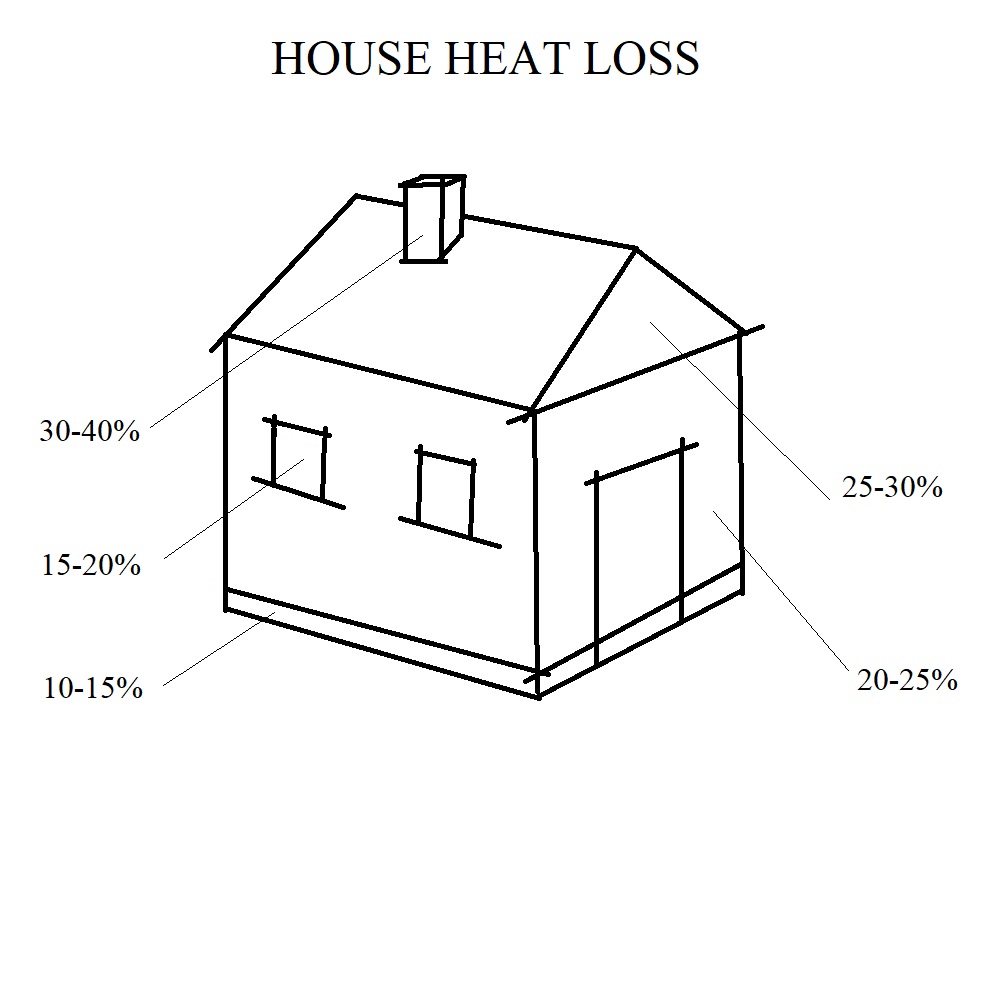
WHAT ARE THE PRIMARY ZONES IN YOUR HOME THAT REQUIRE THE HIGHEST PRIORITY FOR INSULATION?*
Insulating a home isn't just about saving on bills; it's also about maintaining optimal indoor temperatures and ensuring the well-being of its occupants. By insulating our homes, we aim to achieve these goals. However, it turns out that this isn't always the case.
In our home, there are areas particularly prone to errors during installation, resulting in the greatest heat loss. Therefore, these are the places that deserve the most time and effort. In this article, you'll learn about these areas and why they're so crucial.
PHYSICS PRINCIPLES AND HOME INSULATION
Where insulation matters most aligns closely with basic physics principles, directly impacting our home environments. During winter, indoor heating raises temperatures and vapour pressure, causing both to move upward. This upward movement warms areas near the ceiling and throughout upper levels of the house, including staircases.
When you increase the temperature on the thermostat, you correspondingly raise the temperature in the highest points of the house. That's where you can typically find the highest temperature in the home.
WHERE IS INSULATION MOST IMPORTANT?
The following diagram illustrates where the greatest heat losses occur in the home. Depending on the percentage of heat lost through each part of the house, it can be determined that the most money should be allocated to insulate that particular area of the building. 
That the majority of heat is lost through ventilation. Apart from installing mechanical ventilation in the house, there are hardly any other options to prevent these losses.
Referring to studies conducted on homes using thermal imaging cameras, it has been found that the second most vulnerable elements to heat loss are our windows and doors. Through them, we can lose up to 25% of heat. The only solution in this case is to replace windows with double glazing or to replace doors with a lower U-value coefficient.
Considering the substantial heat loss from indoors through the ceiling, insulating the attic floor becomes the key zone to focus on for winter comfort and efficiency in the house. This area of the building gains greater importance when we're keen on saving money by insulating the attic.
TIP: Heat tends to escape the most through the attic, making it the main target for insulation when you're improving your home's energy efficiency.
When you're insulating the attic floor (cold roof), the top choice for insulation is PIR board. But many opt for loft roll more often because it's cheaper and easier to install.
When insulating the attic using the 'warm roof' method, meaning when insulation is installed between the rafters, the best solution will still be to use rigid PIR boards, as unlike mineral wool, they do not sag over time and remain undamaged in place throughout the period of use.
The next important areas to insulate are, of course, the exterior walls of the house, through which we can lose up to 20% of heat. In the UK, most homes are built in rows, so you only need to insulate the front and back walls of the house.
For this, there are three types of insulation materials: polystyrene, Rockwool DD, or Phenolic board K5 made by Kingspan. If you're limited in terms of insulation thickness, the best choice would be Kingspan Kooltherm, which offers the highest R-value.
The floor is another crucial area where we lose heat, up to 10% in fact. An uninsulated floor can result in chilly carpets, drafts, and cold feet. Since heat naturally rises, floors often receive less attention during home insulation.
However, it's worthwhile to insulate the floor and install low-temperature underfloor heating, which can reduce gas bills by around 30%.
To insulate the floor, rigid boards are used, whether it's XPS (extruded polystyrene) or EPS (expanded polystyrene). Most people opt for PIR boards to insulate floors between floor joists due to their ease of installation.
CONCLUSION
Summing up, knowing our homes well helps us identify the coldest spots in winter. Some of us might keep money in low-interest bank accounts and pay high bills every day. It turns out that nothing yields returns quite like home insulation. There are cases where a return of 100% occurs within just 5 years, making it a very good investment. It's important to remember that bills tend to rise with inflation, so it's worth finding those most important places in your house and insulating them. Once and for all, forget about this.
Related Searches:
THE DANGERS OF OVER INSULATING YOUR HOME
SHOULD I REMOVE 80 YEARS OLD INSULATION?
HOW TO CUT A PIR INSULATION BOARD?
HOW TO CUT FIBREGLASS INSULATION
THE PRICE OF COMFORT: UNRAVELLING WHY INSULATION IS SO EXPENSIVE
*Insulationgo LTD strives to keep the content accurate and up-to-date, but we cannot be held responsible for any mistakes or exclusions.
The information in this blog isn't expert advice and shouldn't replace talking to the right specialists. Before buying or deciding anything based on this info, it's best to contact the product manufacturer directly to double-check if it's right for what you need.
Descriptions, drawings, photographs, data, proportions, weights, and measured values provided here may change without prior notice and do not establish the guaranteed contractual quality of the products. The recipient of these products holds the responsibility to comply with proprietary rights, existing laws, and legislation.
Using this blog implies acknowledgment and agreement that Insulationgo LTD cannot be held accountable for any damages, losses, or inconveniences resulting from the use or reliance upon the information provided. This limitation of liability extends to all users of the blog, including visitors, readers, and subscribers.










































































































